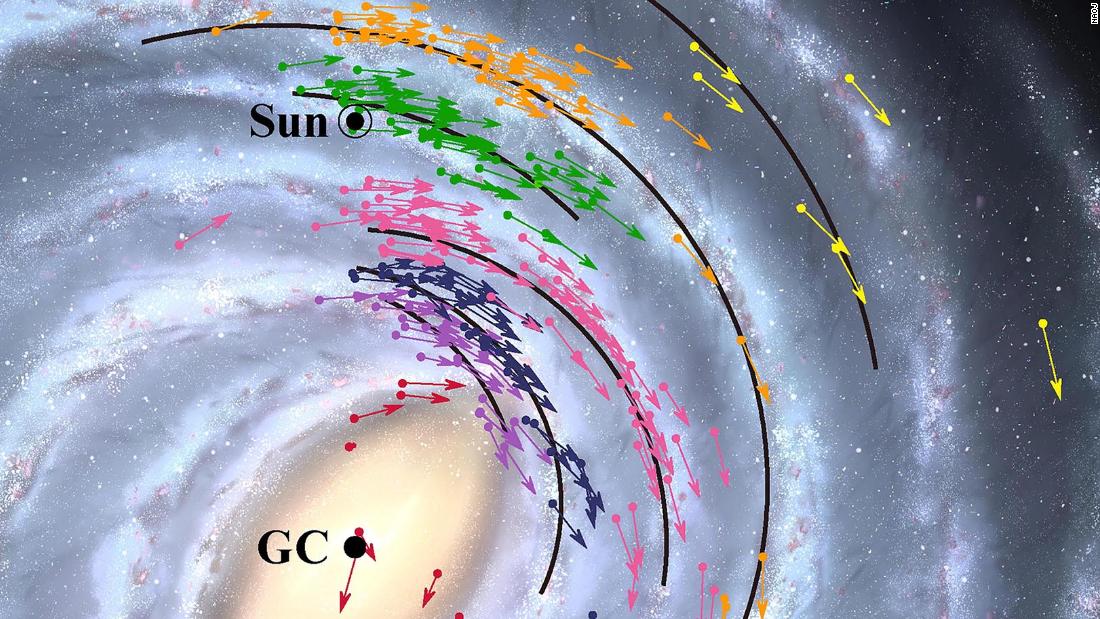This map indicates that the center of the Milky Way galaxy and the black hole located there are 25,800 light-years from Earth. This is closer than the official value of 27,700 light-years that was adopted by the International Astronomical Union in 1985, the Japan National Observatory said.
Moreover, according to the map, our solar system is traveling at 227 kilometers per second as it orbits the center of the galaxy – that’s faster than the official value of 220 kilometers per second, the statement added.
Since Earth is located inside the Milky Way, it is difficult to step back and see what the galaxy looks like. To overcome this, the project used astronomical measurement, the accurate measurement of the position and movement of objects, to understand the general structure of the Milky Way and the location of the Earth in it.
A more refined approach
In August, VERA published its first catalog, containing data on 99 celestial bodies. Based on this catalog and recent observations by other groups, astronomers have created a map of location and velocity. From this map, scientists were able to calculate the center of the galaxy, the point around which everything revolves.
VERA collects data from four radio telescopes across Japan. The observatory said that when combined with telescopes, they could achieve a solution that in theory would allow astronomers to spot an American coin placed on the moon’s surface.
The observatory explained that the changes do not mean that the Earth is moving towards a black hole. Instead, the map more precisely identifies where the solar system has been located at all times.





